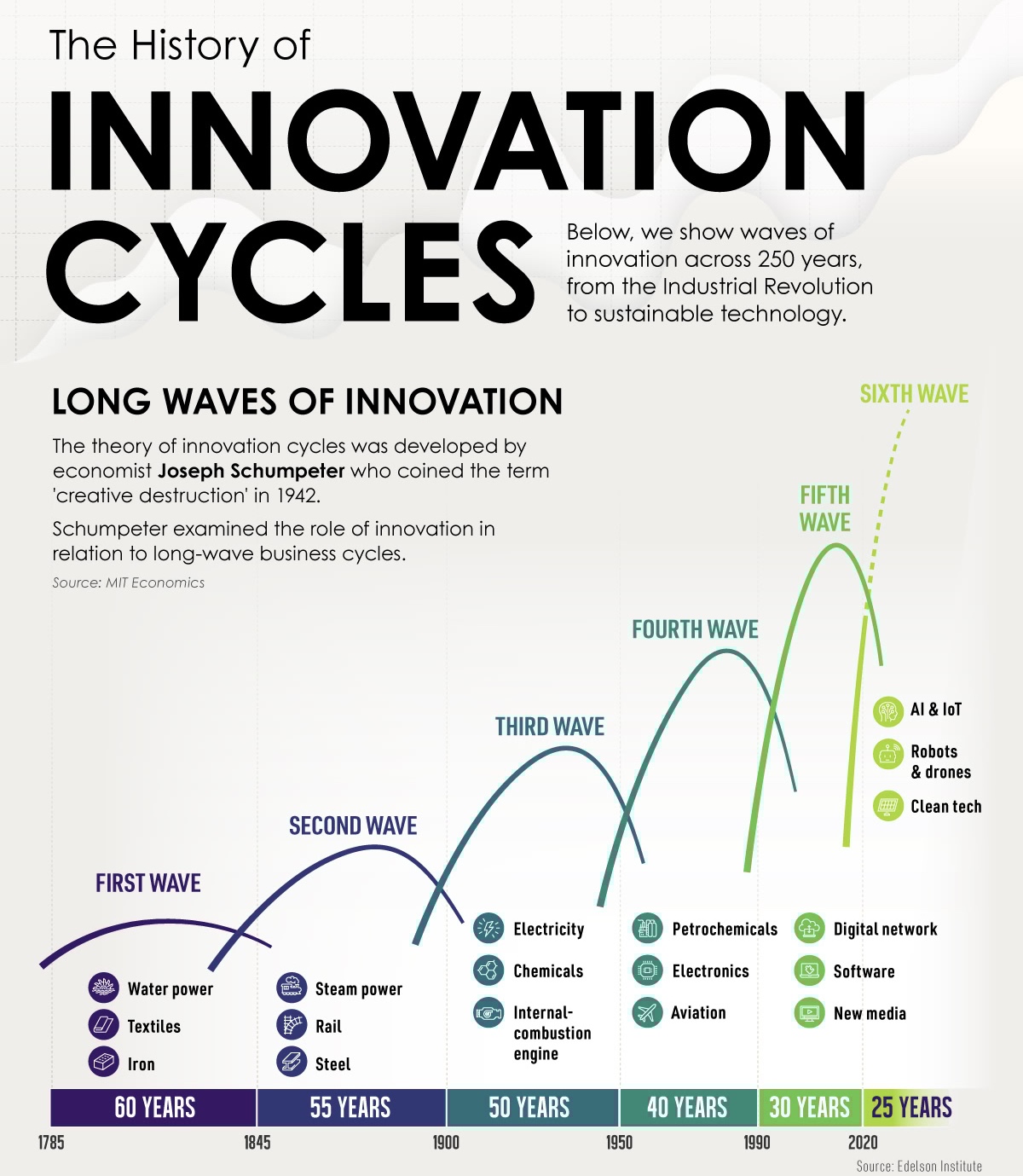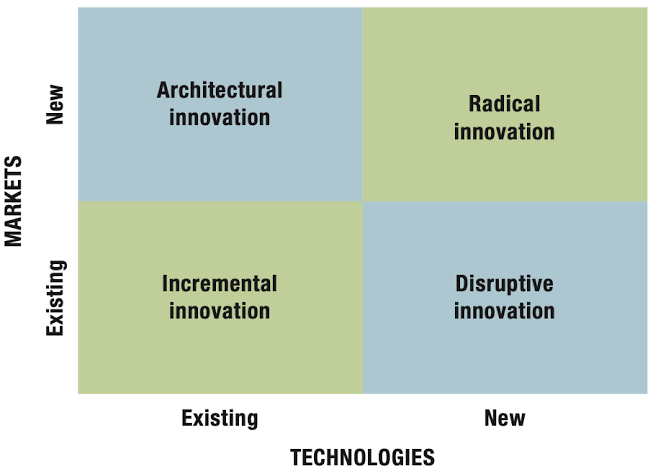Choosing to remain static in a highly competitive marketplace is a death sentence. It’s like refusing to run the race after the blast of a gun. You’d miss the reward and lose your audience’s interest, too.
Innovation helps solve consumers’ problems, beat competitors, and fuel rapid growth for your business.
This article shows the 4 types of innovation you can adopt for your company’s growth strategy. But firstly, we’d look at how innovation has evolved to its current phase.
History of Innovation
Innovation, which is now central to the evolution of any field, first began with much skepticism. Many people died for daring to be innovators.

Today, we’re in the golden age of innovation, but there was much build-up to this phase. The world didn’t know what the future had in store when industrialization began.
Every young tree began to spring into a roaring plant.
Plants and factories replaced trees.
The world grew, and everything in it.
Henry Ford revolutionized Karl Benz’s idea of who could own a car and made it available to ordinary people. His introduction of the assembly line became the apex of mass production.
The Wright brothers original ideas transitioned into Concorde supersonic jet, Supersonic Overture, North American X-15, and Virgin Galactic craft.
The brothers will be somewhat proud, marveled, and puzzled simultaneously. But this teaches a lesson.
Inventors, entrepreneurs, and pioneers didn’t initially build their inventions to their perfect state. Still, as the years pass, it’ll eventually be nearly perfect. Webvan’s financial statement clearly shows this in its 2000 annual report: “Webvan’s facilities do not currently operate at or near their originally designed capacity.”
Suppose the facility does not operate at its designed initial capacity; is innovation not meant to bring it to its perceived design?
But their statement went on like this: “Webvan does not expect any of its facilities to operate at designed capacity in the foreseeable future. Webvan cannot assure you that any facility will ever operate at or near its designed capacity.”
Today, Webvan is dead.
Innovation aims to bring a product or its customers to a perfect state. The Kaizen philosophy, or lean manufacturing, gives us glimpses of why we should adopt this culture.
As every industry evolved, the world started to revolve (revolutionize). One thing led to another. Every industry began to cross-link and integrate.
The world grew at a rapid pace. The world could not recognize its old self.
Now, let’s discuss the 4 types of innovation.

4 Types Of Innovation
Incremental
Incremental innovation is the continuous improvement of a product to make it more efficient and appealing to customers.
Changes are small and gradual, such as adding new features and changes in design. iPhone’s iOS updates, improved design, and additional features in its camera are perfect examples.
The iPhone camera has gone through gradual change with High dynamic range imaging (2010), panorama photos (2012), True Tone flash (2013), optical image stabilization (2015), the dual-lens camera (2016), portrait mode (2016), portrait lighting (2017), and night mode (2019).
Manufacturers simply make the product slightly better than the previous version.
Making random upgrades is not innovation. Such upgrades can be disastrous when customers are unwilling to pay for them.
However, when you interact with your customers, listen to their complaints, research their pain points, and meet their needs, you’ll enrich their daily lives and improve their user experience.
Disruptive
When small companies overthrow big establishments and dominate the industry, they’re said to disrupt the market. They achieve this feat by targeting the overlooked segments and delivering affordable and convenient products and services.
They abandon traditional business methods, and wide acceptability may take time. Still, in the end, it’ll convert non-consumers into customers.
You may say, “How’s this even possible?”
Like David and Goliath allusion or the underdog stories, the small business takes advantage of the established companies’ complacency and conservative approach, the latter preferring to settle for gains rather than take the risky route of offering better service to its customers.
They mindlessly choose to optimize existing products until a small business sees a missing link in the industry, strategizes, takes the opportunity, and wins the market.
For example, Blockbuster dominated the movie industry with DVD mail service until Netflix disrupted the sector with web streaming.
Architectural
Professor Rebecca Henderson and Dean Kim Clark of Harvard Business School introduced this type of innovation in 1990.
Architectural innovation involves applying existing technology, products, or capabilities to a new market or audience.
The company slightly changes a product’s architecture to appeal to a more contemporary market.
Companies identify existing products and integrate them into their portfolio. These changes become significant and will completely differentiate from competitors.
A notable example is Apple merging a wristwatch with technology, changing its architecture, and bringing it into a new market. Another is Black Panther’s Kimoyo beads.
McDonald’s aimed to improve its ordering times to offer customers better choices. Therefore, its Apprente and Dynamic Yield acquisition gave its customers valuable experience.
Radical
We had no airplanes, computers, or the internet long ago, but today, we can’t imagine a world without them.
Radical innovation is a new product or service that opens a new market. A market that no one ever saw coming, which transforms the way the world functions and leads to highly accelerated economic growth.
The product or founder becomes the industry’s pioneer as other competitors take advantage of this new market’s opportunity.

Sir James Dyson is a radical, innovative entrepreneur.
Washing machines, cloud technology, and MRI machines are other examples of radical innovation.
Bottom Line
The goal is not just to innovate but to be consistent with innovation. The lack of it could cost you a fortune.
Begin your innovative journey by adopting any of the 4 types of innovation, if not all of it.
If you can’t be radical, be incremental.
Know that innovation makes your products valuable, solves your customers’ problems, and increases your company’s revenue.
